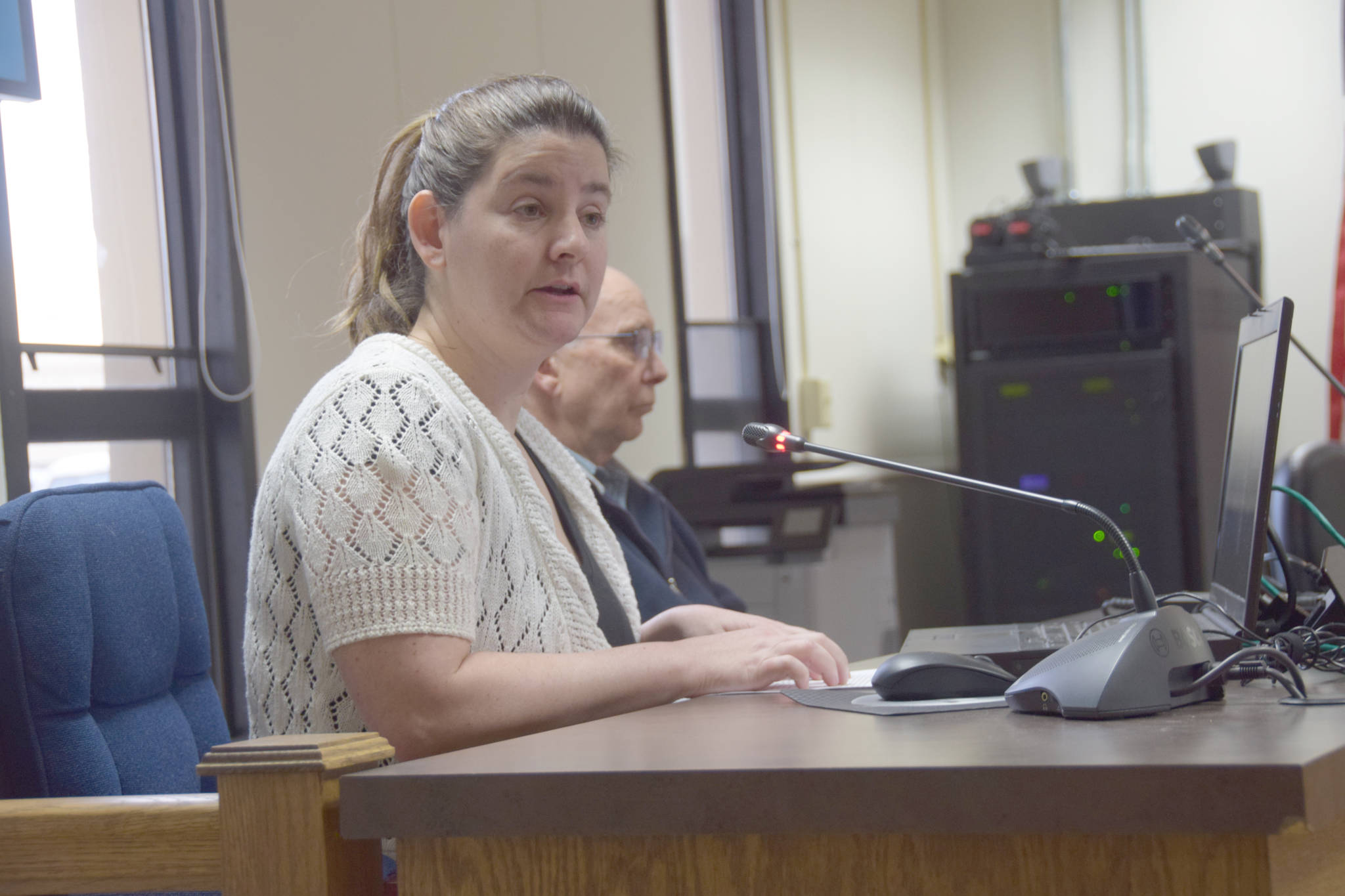Rebecca Carnell, director of Nursing and Clinical Services with 1st Choice Home Health Care, is looking to bring a medical hospice program to the peninsula.For the past six months, Carnell has been negotiating contracts with medical equipment suppliers and other health care service providers to establish the infrastructure her medical hospice program will require. As the contracts are being finalized, Carnell has shifted her focus to educating medical professionals and the rest of the community on the importance of medical hospice in a community as well as the differences between medical hospice and volunteer hospice.
Carnell gave a presentation at the Borough Assembly Meeting Tuesday night at the request of Mayor Charlie Pierce to explain these differences and to spread awareness about her efforts.
Volunteer hospice gathers volunteers and trains them to provide respite care for terminal patients in tandem with family members or other caregivers. Carnell said that this can be anything from doing the cooking and cleaning around the house to just spending time with the patient in companionship. Volunteers will often stay with patients while their primary caregivers leave to shop for groceries or run other errands. Carnell said that volunteer hospice programs are well-established on the peninsula and are supported mostly by donations.
Medical hospice on the other hand, is quite different. Carnell said that a medical hospice program has to be run by licensed medical professionals including registered nurses (RN), social workers and certified nursing assistants (CNA), and while Carnell has filled some of those positions already she said she is not quite fully staffed. Carnell said that medical hospice is always provided at no cost to patients and is reimbursed through Medicare. Medical hospice provides a much more comprehensive approach to hospice care than volunteer services, and Carnell explained the four different types of care provided through medical hospice: routine care, respite care, continuous care and general in-patient care.
Routine care involves the medical providers coming to the patient’s home on a regular basis to tend to their needs. The providers typically stay for one or two hours at a time, and the care provided can range from administering medication to engaging in physical therapy sessions.
Respite care is where the hospice patient is temporarily moved to the hospital for treatment — up to five days a time — while the primary caregiver is given a few days of respite. Carnell said that primary caregivers are often family members with little to no training in how to actually be caregivers, and the stress that comes with caring for a loved one at the end of their life can be overwhelming at times.
Continuous care is what Carnell described as “crisis care.” If a patient suddenly experiences intense pain or any other problem that cannot be remedied quickly or easily, then nurses will stay with the patient up to eight hours at a time to deliver nonstop in-home care. The focus of continuous care is to make sure that whatever problem arises is thoroughly resolved in the moment and monitored to make sure it doesn’t happen again. Carnell said nurses — including Carnell herself — would be on-call 24/7 to respond to such situations.
The last type of hospice care Carnell described, general in-patient care, is the next step if eight hours of continuous care was not enough to remedy a situation. Nurses will work with the rest of the medical team to transport the patient to the hospital for up to five days of additional treatment. Carnell said this typically happens when the solution to the problem involves medical equipment or procedures that are only available at the hospital. Carnell said that regardless of what type of medical hospice care is provided, honoring the patient’s wishes and requests is her team’s top priority.
“Sometimes the only thing people can control is how they die,” Carnell said.
Carnell said that she wanted to start medical hospice on the peninsula because she knows that at the moment, there are no other alternatives. Carnell gets calls “every day” at 1st Choice asking about services that only medical hospice can provide, and she is tired of telling people that they will have to go to Anchorage for the care they need. Carnell also said that with the peninsula’s rapidly growing senior population, the problem will only get worse if nothing is done soon.
“Medical hospice takes some of the stress off of family members who are caregivers, and allows them to focus on enjoying the time they have left with their loved one.” Carnell said. Carnell hopes to start the peninsula’s only medical hospice program in August or September of this year.

